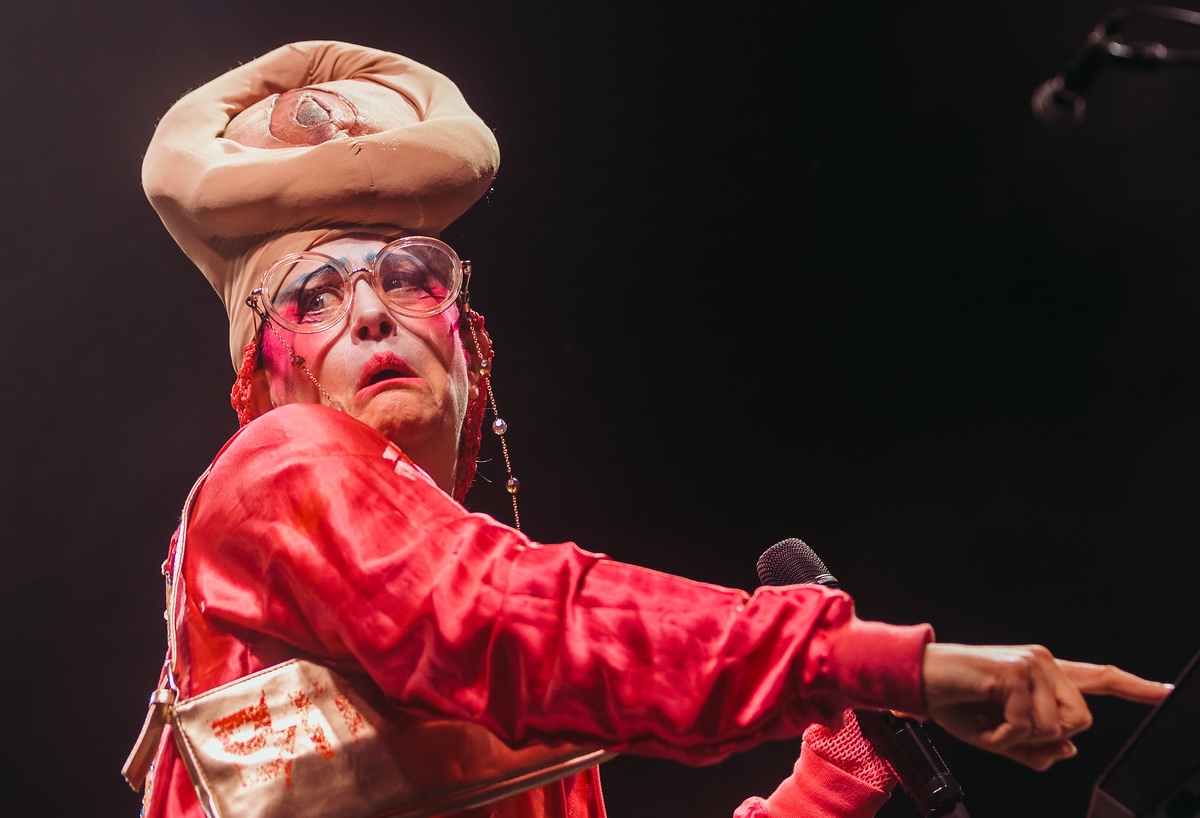Hobart’s famed MONA (Museum of Old and New Art) has had such a significant impact on Tasmania’s tourism and arts scenes, that it’s hard to remember a time B.M. (Before MONA).
But before MONA threw open its doors to the public in January 2011, and before their famed pagan-esque festival Dark Mofo lit up its inverted neon red crosses in 2013, there was MONA FOMA – the little Tassie festival that could, and, in fact, did.
Curated by Violent Femmes member Brian Ritchie, MONA FOMA has seen international and local musicians head the bill, with the likes of Nick Cave and the Bad Seeds (2009), Amanda Palmer (2011), The Flaming Lips (2016) and Pnau (2019) all gracing the main stage. There’s also a stellar arts program that has delivered everything from orchestral mash ups, dark opera, and interpretive dance performances, to the final minutes of jazz drummer Chloe Kim’s 100 Hours of Drumming.
A few weeks ago in Hobart, against the backdrop of Peaches, Pavement and Bikini Kill’s appearances at the 2023 edition, we chatted to Ritchie about the festival’s enduring presence, why it is important to the local arts scene, and how he thinks the festival scene is changing, post-COVID.
“In the last 15 years, the profile of Tasmania has been raised a lot,” says Ritchie. “The first MONA FOMA, which happened several years before the museum (MONA) even opened, was in the New York Times – and it was like, ‘oh, wow, the New York Times is starting to pay attention.’ And it’s just been getting more and more of a groundswell since MONA opened.”
“The artists we like to work with, they’re people who are unique, who have their own ideas – who may be influential, but they have few imitators, and they’re not imitating anybody else either… it’s more than just having a varied eclectic, but it’s not pointlessly eclectic. A music programme, but also incorporating art forms – other art forms.”
Peaches – a highlight from this year’s music program – certainly fits the bill. Having appeared previously in the 2017 lineup, performing an entirely solo version of Jesus Christ Superstar, accompanied only by piano, this year she returned with her trademark raunchy set packed with driving hits and visual snacks. She also delivered a warm shout out to Tassie on the night – a sentiment that seems to be popular amongst the artists that make their way across the Tasman.

Peaches at MONA FOMA 2023
“Well, I moved here because originally I was fascinated with Tasmania because of Errol Flynn – the actor, he was born here, and I was a big fan,” says Ritchie. “And I loved it, just the natural beauty of it, the air, the quality of life, all these things drew us in.”
“But I think a lot of the artists who have come here, they see that – like David Byrne was in MONA FOMA. And he wrote a huge blog post about Tasmania, about travelling in nature, about the cultural aspects of it, and everything.”
It’s a fondness shared by American indie singer songwriter Angel Olsen, who we chatted to backstage before her second night appearance at MONA FOMA this year. Hailing from Asheville, North Carolina, her comfort in visiting Tassie perhaps speaks to home; small, with historic roots, and punching above its weight in the arts and music scenes.
“It’s one of my favourite places to visit,” says Olsen. “Just being here. If it reminds me of Asheville a little bit, where I live… the rest of the band, I had talked to them about MONA, and was just talking it up, and how crazy it is.”
“You know, the vagina wall is kind of sick. I feel like you’re talking about how everyone talks about it. But then when you get close to it, no one wants to look – they’re afraid to be seen looking. But a poop machine? Yeah, I don’t really care about that. But that’s cool that they did that [laughs].”
“I think it’s just really fun to show people – this place, and how special it is.”
The international fondness for our little island off the south coast is such a huge part of what makes MONA FOMA a mainstay on the boutique festival circuit – considering how out of the way it is, realistically, for international acts to travel to, it seems the small festival vibe is still a burgeoning business.
The pandemic, climate change, and increasing stoushes with locals who have seen the tourism sheen wear off, has shot a few arrows into the festival giants of late; we’ve seen Falls pivot to a Melbourne CBD-based offering, Splendour drowned in flooding following allegations it has become ‘unsustainable’ in its Byron Parklands home, and a swathe of cancellations in 2022 as Omicron took hold.
It’s enough to wonder if the days of these kinds of big festivals, hosting hundreds of thousands of punters, are over. When I pose the question to Ritchie – someone who has played his fair share of big festivals over the years, he agrees.
“It’s unsustainable,” he says. “It’s kind of even un-ecological to have these huge festivals. And we’ve seen a lot of bad things happening at some of those festivals – people can’t cope with the crowds. You can’t subject the audience to that kind of environment ethically.”
“People will continue doing those huge festivals, and there will continue to be problems with them. But the astute consumer of culture will support these boutique festivals like MONA FOMA.”
More information about MONA FOMA can be found here.






































